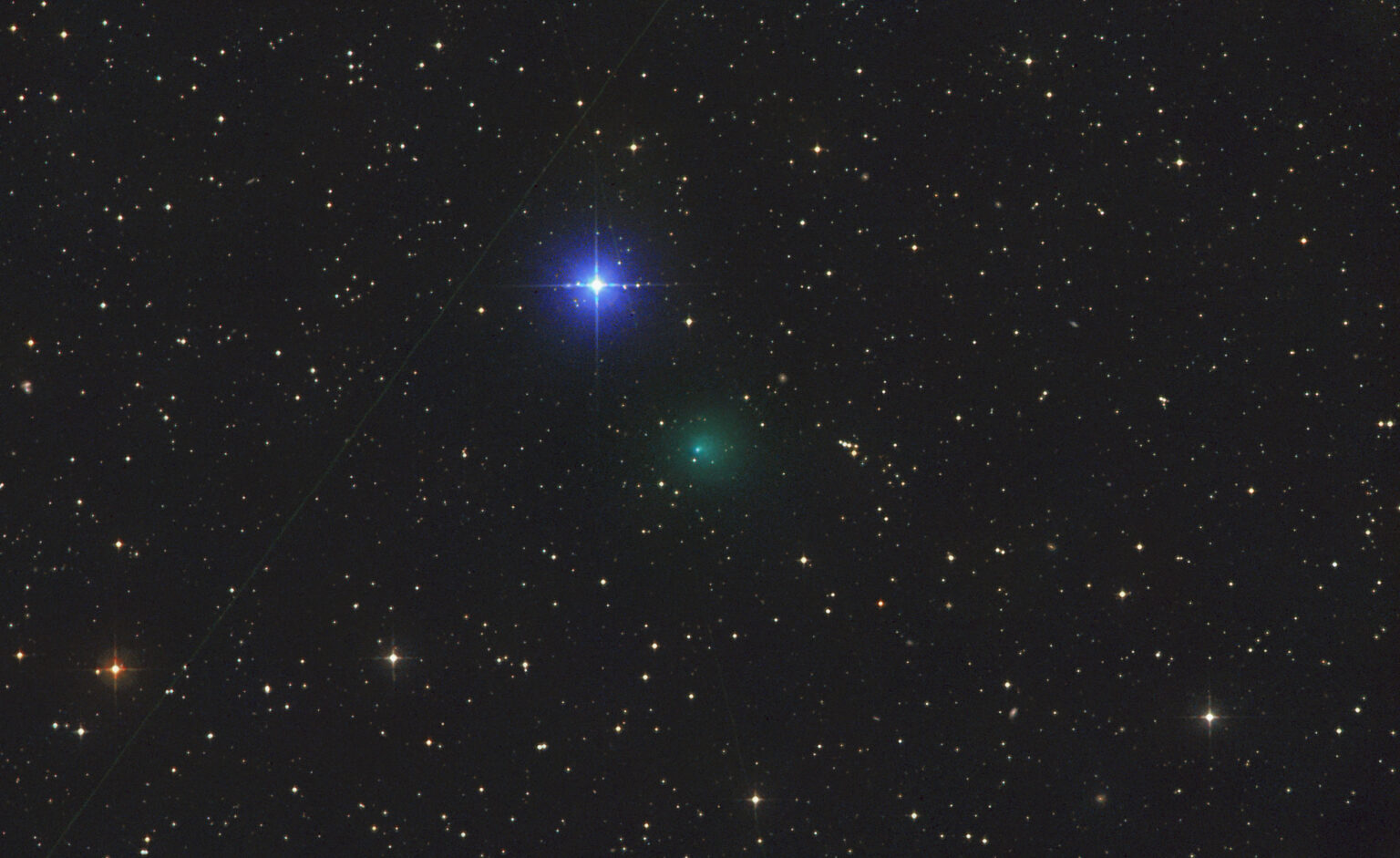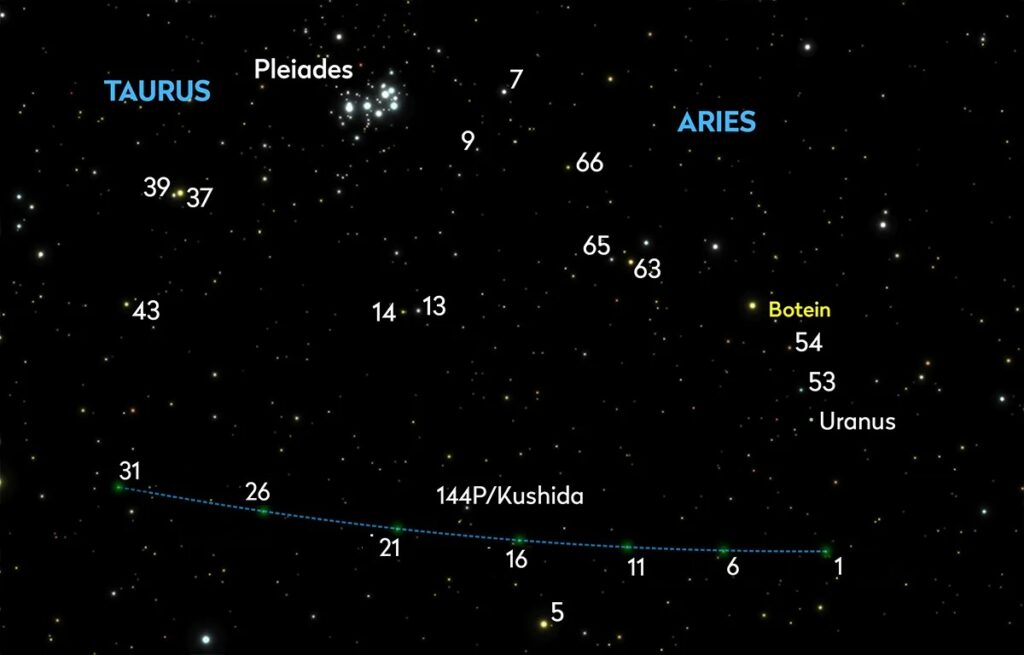Short-period comets discovered in the second half of the 20th and early 21st centuries are rarely very bright, except when they come very close to Earth (but this happens very rarely). Sometimes they were discovered during such close approaches, and then they appeared only as faint objects, available for observation only with the help of large telescopes. This is how Comet Kushida (144P/Kushida) was found at the time. It will once again pass perihelion on January 25, 2024.
This comet was discovered on January 8, 1994, 5 days before its maximum approach to Earth, when it approached us at a distance of 0.499 AU (74.7 million km). Despite this, its brilliance at that time barely exceeded the 11th magnitude. After calculating the orbit of the new celestial body, it became clear that this was a typical representative of the Jupiter family, with an orbital period of slightly less than 7.5 years around the Sun. Interestingly, in January 1957, when 144P/Kushida flew even closer to us (at 0.42 AU), no one noticed it.
The appearance of the comet in 2001 was unfavorable for observations — it passed perihelion, being on the opposite side of the Sun relative to the Earth. But in 2009, the “tailed guest” surprised astronomers: although it flew noticeably further away from us than in the year of discovery, its visible brilliance almost reached the 8th magnitude, which allowed even amateurs with small instruments to observe it. Even more interesting was the return of this comet in 2016. Then, despite the relatively unfavorable configuration, it still gained a fairly high gloss, almost two stellar magnitudes (that is, about 6 times) higher than predicted.

This strange behavior made scientists take a closer look at this comet. In its current appearance, they have been monitoring it since the middle of last year, but so far they have not noticed any significant anomalies in its brilliance. On December 12, 2023, 144P/Kushida passed at a distance of 0.572 AU (85.5 million km) from Earth. Then some observers reported that its total brightness reached the 10th magnitude. By the end of the year, this object was already actively observed by amateurs with 10-centimeter or more powerful telescopes.
Now Comet Kushida is moving along the constellation Taurus and at the end of January it will be observed against the background of the Hyades star cluster (although the Moon will interfere with full-fledged observations until January 27). On February 11, it will pass less than half a degree south of Aldebaran (alpha Taurus). Before that, as already mentioned, it will be in perihelion at a distance of 1,399 AU (209 million km) from the Sun. Until then, its brilliance will grow. It seems that at its maximum, it will actually reach the 9th magnitude; this will allow you to see the “tailed star” in conditions of a dark, transparent sky using telescopes and binoculars with a lens diameter of at least 8 cm. However, it is impossible to exclude its sudden outburst like the one it demonstrated in the last appearance.

The next return of 144P/Kushida will occur in 2031, but then its configuration relative to the Sun and Earth will not be as favorable as it is now. The relatively close approach of this comet to our planet (up to a distance of 0.482 AU) will have to wait until December 2067.
Meanwhile, the brighter periodic comet Pons-Brooks is approaching the Sun.
Follow us on Twitter to get the most interesting space news in time
https://twitter.com/ust_magazine


